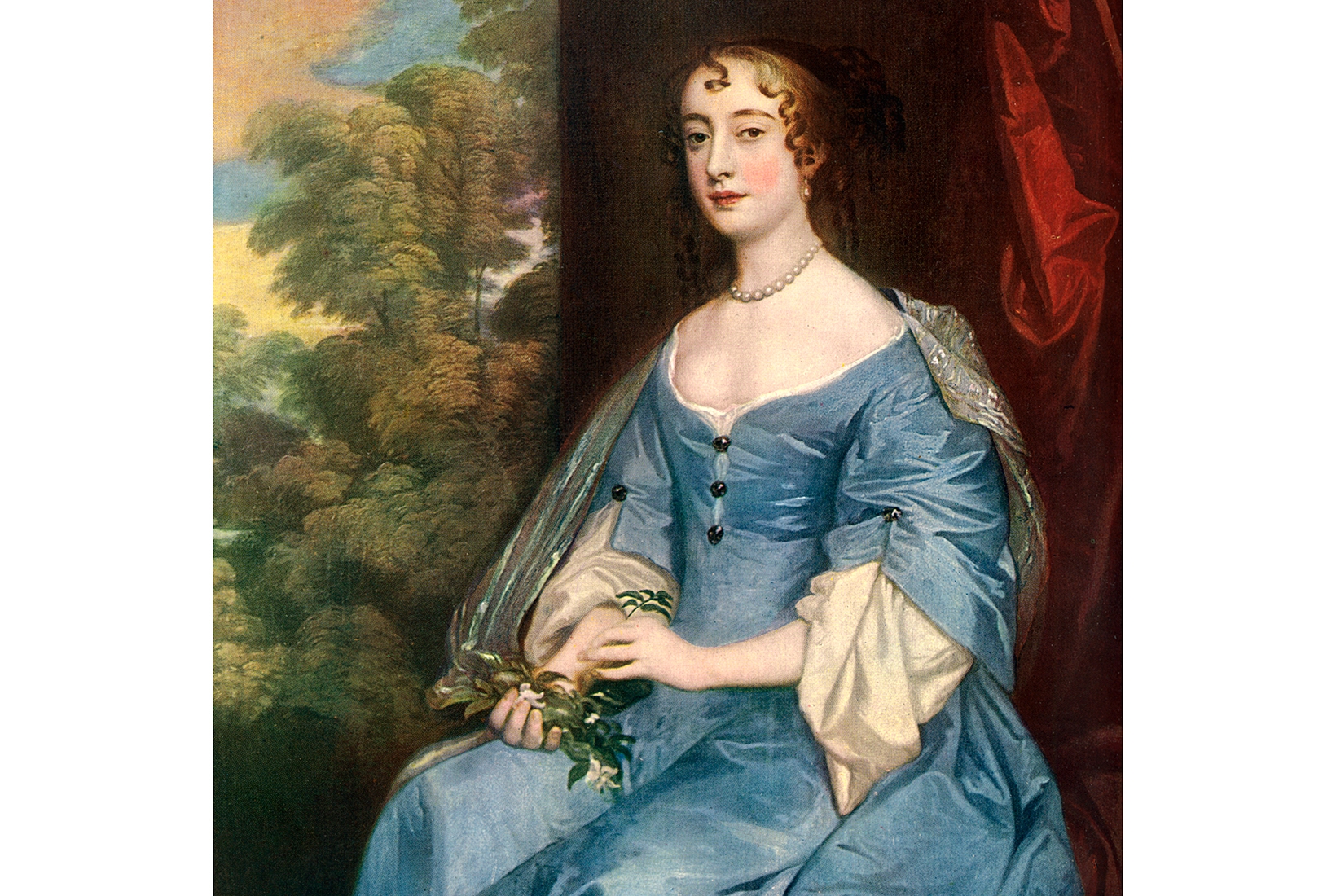When Queen Alexandra chose her ladies in waiting she prudently surrounded herself with elderly and plainish ones, who did not tempt her susceptible husband Edward VII. ‘These are your wives?’ the Shah of Persia solicitously enquired. ‘They are old and ugly. Have them beheaded and take new and pretty ones.’
In earlier times, beheading was a definite possibility (one of Catherine Howard’s ladies was executed) and court life was, to say the least, fraught. As Anne Somerset reports, Tudor courts were a maelstrom of intrigue, surreptitious liaisons, political in-fighting, struggles for the ear of the monarch and rampant greed.
Elizabeth I’s ladies were terrified of her: her sarcasm was withering and, if in a real rage, she would beat them fiercely, once breaking a girl’s finger. In her eyes, their greatest sin was wishing to get married and therefore leaving her service. Love affairs often got the same treatment. One reason for the Queen’s strictness on matters of morality was her justifiable desire for law and order in her court: violence always lurked beneath the velvet and pearls, and most men were armed.
In a rage, Elizabeth I would beat her ladies fiercely, once even breaking a girl’s finger
Not much changed with the Stuarts. Drunkenness was a feature of James I’s court — the King himself was a toper —and beauty was still a woman’s best asset. The favourite lady of Charles I’s wife, Henrietta Maria, was Lady Carlisle, so brilliant and such a beauty that half the court was in love with her. As he watched her take her daily walk at Hampton Court, the poet John Suckling avidly undressed her with his eyes: ‘I was undoing all she wore/And had she walked but one turn more/Eve in her first state had not been/So naked or so plainly seen.’
With the Restoration and Charles II’s marriage to Catherine of Braganza there was a scramble for places at court, where employment could be highly lucrative. But nothing exceeded the drama of Charles’s determination to make the dazzling, tempestuous Barbara Castlemaine one of the Queen’s ladies. There were tears and tantrums, and courtiers whispering in corners. At first Catherine bravely resisted having her husband’s mistress foisted on her in such intimate fashion (ladies of the bedchamber were with the queen at almost every waking moment) but eventually, worn down by the King’s sacking of her own Portuguese ladies, alone and powerless in a foreign land, she had to submit.
Barbara was but the first of many; the King’s inability to resist temptation was so well known that foreign ambassadors, wanting an unofficial channel of communication or influence, schemed to place in the Queen’s service a pretty countrywoman who would gracefully succumb to Charles’s inevitable advances. Louise de Kérouaille’s talents were such that she became a rich English duchess while also acquiring an estate in France from the grateful Louis XIV.
For most young women of the period sent to court by their parents in order to make a good match, the pitfalls were many. Not only did they have to dodge the open arms of the King but also those of the courtiers, who regarded them as fair game — for these men, the serious step of marriage required a bride who could provide wealth or a social step up the ladder — while a bastard child often meant lifelong disgrace.
The most influential of all ladies in waiting was probably the Duchess of Marlborough, a real whip-wielding dominatrix manquée. Once Queen Anne’s closest friend, Sarah ended by so bullying the Queen and writing such threatening and insolent letters that finally Anne was reduced to telling Sarah’s husband the Duke ‘I desire nothing but that she would leave off teasing and tormenting me’, before finally ridding herself of this termagant.
In Hanoverian times courts got duller and duties were more regimented. The ladies of the bedchamber handed their mistress her shift, and perhaps her fan when she was dressed, and at table took the covers off the dishes, carved, tasted them to be sure they were free of poison, and then served them to the queen on bended knee. Nor could they sit in the presence of royalty or leave the room without permission; one, desperate to relieve herself, left a puddle ‘as large as a dining table for ten’ on the floor. The pay had diminished too, but the ladies were still able to use their influence to benefit family or friends.
In George III’s court any scandal got you banned from drawing rooms; the uxorious monarch — he had 15 children by his wife and was one of the few kings never to have had a mistress — insisted on a rigid etiquette. ‘In the first place you must not cough,’ wrote Fanny Burney (later keeper of the robes) ‘If you find yourself choking with the forbearance, you must choke — but not cough.’
Anne Somerset takes us on, through Queen Caroline’s eccentric behaviour and George IV’s numerous mistresses to Victoria’s overturning of a Tory government by her unconstitutional refusal to lose her mostly fiercely Whig ladies, her maltreatment of Lady Flora Hastings and the freezing gloom of Balmoral. As this book was first published in 1984, we learn nothing about today’s court, but it is a fascinating reprint.







Comments